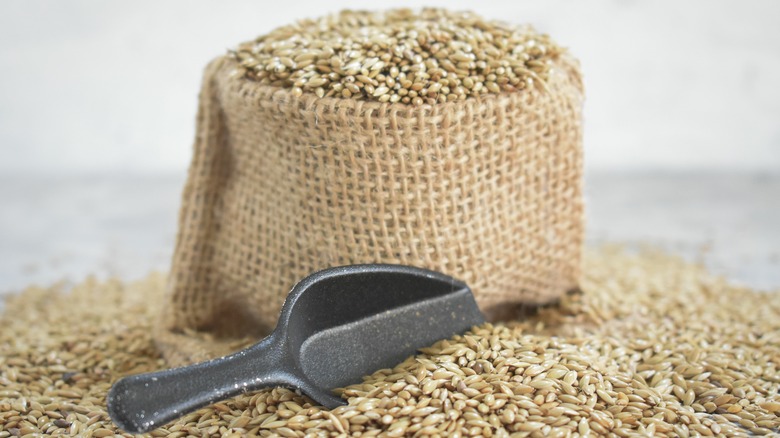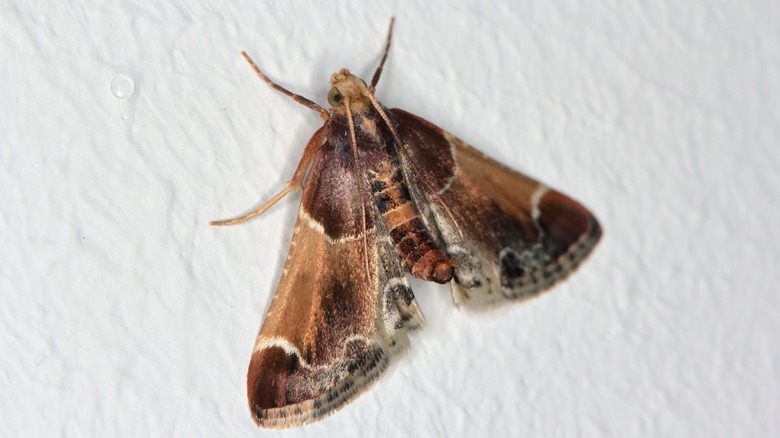Your Birdseed Could Be Bringing This Pesky Pest Into Your Home
Many homeowners enjoy feeding birds and work hard to keep their bird feeders fully stocked with birdseed at all times. While attracting birds to your garden and yard can be well worth it, storing birdseed can potentially attract moths as well. If moths have recently appeared in your storage shed or pantry, you may want to take a closer look at any birdseed you have stored. There could be moths and larvae making your birdseed their home. It's common to find moths in a bag of birdseed where they'll lay eggs and feast on the birdseed that's present. Similarly, they're also attracted to many other types of dry goods, including oats, pet food, barley, and cereal.
Moths reproduce quite a bit, so if you don't deal with the problem as soon as you can, you may find that it gets worse quickly. Pantry moths lay eggs soon after emerging from their cocoons and lay an average of 300 eggs at a time. If you notice them in your birdseed, deal with the issue immediately and take preventative measures to stop them from coming back.
Removing moths from your birdseed
If there's only a small number of moths or larvae in your birdseed, then the problem shouldn't be too difficult to deal with. You can freeze the birdseed to eliminate the moths. You may want to store the birdseed in a larger container or you may want to separate it into small zipper bags to make it easier to place into your freezer. You'll want to ensure all containers have been cleaned thoroughly and dispose of any birdseed bags and containers you no longer need.
After you let the birdseed freeze, you can then use it as you normally would and feed it to your birds. Once you've eliminated the moths on your birdseed, consider taking a look at other storage areas. Ensure there aren't moths in other parts of your shed or pantry and closely examine other dry goods that you're storing as well. You may need to follow a similar removal method with other items if you notice that any more are present. Keep in mind that if your moth problem is particularly severe, you'll probably want to throw out your birdseed instead of freezing it. Disposing of the birdseed in your home is the best way to ensure the moths are fully removed.
Taking preventative measures
After removing moths from your birdseed, your job isn't complete. Take preventative measures to ensure they don't return to your birdseed or other dry goods in the future. Store your birdseed correctly and do everything you can to prevent them from accessing it. Start using plastic containers while ensuring they remain airtight and sealed completely while in storage. Do the same with other dry goods.
To eliminate a severe moth problem, consider using store-bought moth traps or making a few DIY bug traps. A simple light trap is a great option. To create a light trap, simply cut the top off of a 2-liter bottle and place some soap and water inside. Invert the top, taping it to the bottom half of the bottle. Be sure to remove the lid so that insects such as moths can enter. You can then tie a small flashlight to a string and place it above the bottle, pointing it into the bottle to light it up. Moths will be attracted to the light and the soapy water will kill them.
Another option is to repel them with various scents. Moths are particularly averse to cedar and neem oil, but can also be repelled by mint, cloves, lavender, eucalyptus, and other potent scents. Placing some sachets filled with herbs or cedar chips or finding other ways to add these scents to your storage area will help keep moths away and reduce the need for lethal methods.


